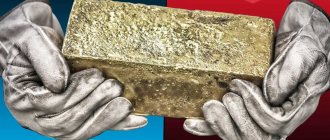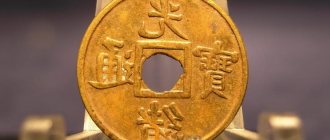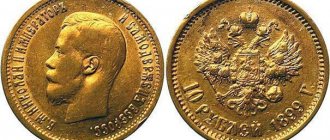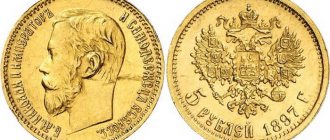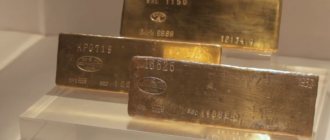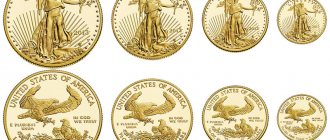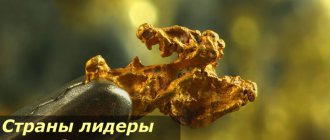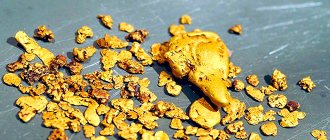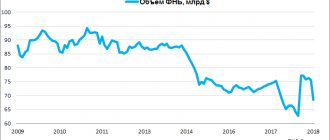In the 19th century, the world was rocked from time to time by gold rushes. The very first struck residents of the states of California, Nevada, Colorado and South Dakota in 1848. The gold rush of 1848-1850 in California is known from the stories of Bret Harte, and the second largest after California - in Alaska, on the Klondike River - owes its popularity, among other things, to the film of Charlie Chaplin and the works of Jack London.
It was in California
On January 24, 1848, carpenter and mill builder James Marshall discovered gold nuggets on the Sacramento River. A few months later, rumors of the discovery spread throughout North America and reached the Hawaiian Islands. Peru, Chile, Argentina. Europe and even China. The next eight years turned the previously deserted region into one of the most promising. Thousands of adventurers, immigrants, vagabonds, runaway sailors, small shopkeepers and other people, abandoning everything, rushed to Sacramento with the hope of easy enrichment. More than a hundred ships arrived from New York alone to San Francisco Bay. “Sacramento is a rich land, gold is shoveled,” the gold miners sang. They dreamed of precious metal, manually dug and sifted tens of tons of soil. The call of gold has reached Europe. People who flocked to California in the hope of getting rich were called forty-nineers and Argonauts... And everywhere in California, as well as on the banks of Sacramento, where there was at least some hint of gold, tent settlements arose, which later turned into cities. - Look at the pile of tents and huts in this deep gorge. These people bury themselves in the ground so that the god of gold will smile at them,” wrote Alonso Delano, an eyewitness to those events.
Development of gold mining through cooperation
A new round of history began with the suggestion of John Sutter Jr., the son of the same worker who started the gold rush with his discovery. So, he founded a new town - Sacramento. A few years later, he managed to turn a small settlement into the economic center of the state, and in 1854 he made Sacramento the capital of California.
San Francisco also expanded - the initially half-empty city began to develop rapidly, many residential buildings, hotels, shops and religious institutions appeared in it, and trade turnover also resumed.
To facilitate the transportation of passengers and goods along the river, it was decided to open regular steamship flights between cities. Thus, by 1850 California had the honor of becoming the 31st state in the United States.
Negro happiness
Prospector William Lewis Manley later recalled: “Anyone who was preparing to become a gold miner began like this: he bought a donkey and a pack saddle, put a load on it - fifty pounds of flour, salt, lard (rendered lard), beans, ground coffee, a small coffee pot, frying pan, shovel, pickaxe and sledgehammer. He had a pair of heavy, rough shoes, cheap trousers, a white woolen shirt and a large soft hat; hanging on his belt was a Colt revolver, a knife in a sheath and a tin basin.” In California, the gold miner was in constant motion. Hearing talk about new open areas, fabulously rich gold veins, he folded his tent and went to a new place. Always at work, from dawn to dusk, he crushed stones with a pick and a sledgehammer, washed the sand, trying to discover a gold mine. But sometimes it was not work, but blind luck (as they said in California, Negro happiness) that could bring fabulous profits. Prospector Charles Pencoast gave the stone he was sitting on to his young partner, he sold it to a merchant for $200, the merchant split the stone and extracted an ingot worth three thousand dollars! And during the funeral of one gold miner, in a pile of earth thrown out of the grave, the pastor... noticed gold. Having sent away the mourning friends of the deceased, the pastor sent for a shovel and a basin, and the deceased was immediately thrown out of the grave.
Land full of gold
The work of a gold miner was unusually hard - in the heat and in the icy water of the streams, only the most hardy and stubborn survived. Diseases decimated the ranks of gold miners - scurvy, dysentery, fever. People were also killed in regular fights and skirmishes, during attacks by bandits and Indian raids. Many committed suicide out of despair. In 1848, gold worth 245 thousand dollars was mined in California, in 1849 - 10 million 151 thousand dollars, and in 1852 - 81 million 294 thousand! But from 1853, gold production began to fall and in 1860 it was almost equal to the production of ten years ago. Moreover, most of the mines were no longer developed by prospectors, but by well-equipped corporations. Thanks to the land of California, literally loaded with gold, a huge territory was developed, and the city of San Francisco arose. And the carpenter James Marshall, who discovered California gold, ended his life in an insane asylum; gold brought him neither luck nor happiness.
California Republic
Flag of the California Republic (1890 photo)
In May 1846, war broke out between the United States of America and Mexico. On June 14 of the same year, several American settlers in the Californian city of Sonoma, unaware of the outbreak of hostilities, captured a Mexican military garrison, arrested the commandant and announced the creation of a new state, independent of Mexico, the California Republic.
The president of the new republic, William Eade, was elected, but in fact the rebels did not create a full-fledged government, the California Republic was not recognized by any state in the world, and even in California itself, not everyone knew about the uprising. When U.S. Army Major John Fremont took command of the region on behalf of the United States of America with sixty soldiers twenty-six days later, the rebel grizzly bear flag was replaced by the U.S. Stars and Stripes (later the bear flag of the California Republic served as the basis for creation of the California state flag). On July 7, 1846, three US Navy ships captured the port of Monterey, finally confirming California's ownership of the United States.
Fish with nuggets for eyes
Almost 50 years later, America and the whole world were once again gripped by a gold rush, which arose not in hot California, but in harsh Alaska. Rumors that there was gold there existed back in the 30s of the 19th century, but attempts to find it did not bring success. Only on August 17, 1896, the precious metal was discovered on the banks of the Klondike River. George Carmack was one of those gold miners who had bad luck on the banks of the Yukon, a river that flows through Canada and Alaska. Resigned to the idea that he would not be successful in the mining field, he, along with his partners, Jim Skokum and Charlie Dawson, decided to take up salmon fishing. On the night of August 16-17, George Carmack saw in a dream a swimming fish with golden scales and nuggets for eyes. The next day, near Bonan Creek, in the Klondike region, gold miners accidentally discovered a thumb-sized gold nugget while washing dishes. George Carmack immediately went to the nearby town of Forty Mail to register the discovered site. No sooner had word spread about the discovery on Bonanza than patches of land that weren’t worth a cent were thickly covered with claim pillars... Thus began the famous gold rush in the Klondike. A stream of dispossessed people, adventurers, small businessmen and simply dreamers poured into Alaska, into deserted, harsh lands, in search of happiness. Among them was the writer Jack London, who later immortalized this madness that gripped people in his works.
Recommendations
- A.H. Koschmann and Bergendahl, 1968, Major Gold Mining Districts of the United States
, US Geological Survey, Professional Paper 610, p.253. - A.H. Koschmann and Bergendahl, 1968, Major Gold Mining Districts of the United States
, US Geological Survey, Professional Paper 610, p.211. - Craig, James R; Rimstidt, J. Donald (1998). "The History of Gold Mining in the United States." Ore Geology Reviews
.
13
(6): 407. doi:10.1016/S0169-1368(98)00009-2. - Schiffer, Christine N. (January 31, 2021). "2021 Minerals Review" (PDF). Reston, VA: US Geological Survey. pp. 70–71. Retrieved June 3, 2021.
- Mining Review, Mining, May 2007, p.28.
- OH. Koshman, M.H. Bergendahl (1968) Major gold producing areas of the United States
, US Geological Survey, Professional Paper 610, pp. 6-8. - OH. Koshman, M.H. Bergendahl (1968) Major gold producing areas of the United States
, US Geological Survey, Professional Paper 610, p.8. - ^ a b
Athey, Jennifer E.; Verdon, Melanie B.; Tvelker, Evan; Henning, Mitch W. (2016). "Alaska Minerals 2015" (PDF). Fairbanks, AK: Alaska Division of Geosciences. Retrieved February 10, 2021. - “Kinross Reports Fourth Quarter 2021 and Full Year Results” (PDF). Toronto, Ontario: Kinross Gold Corporation. February 12, 2021. Retrieved June 3, 2021.
- "Annual Report 2019" (PDF). Chicago, IL: Coeur Mining, Inc. February 19, 2021. Retrieved June 3, 2021.
- "Annual Report 2021" (PDF). Coeur d'Alene, ID: Hecla Mining Company. February 6, 2021. Retrieved June 3, 2021.
- Maureen J. Johnson, 1972 » Arizona Placer Gold Mines
, USGS, Bulletin 1355. - A. H. Koschmann and M. H. Bergendahl, Major Gold Producing Regions of the United States
, US Geological Survey, Professional Paper 610, p.40-41. - A. H. Koschmann and M. H. Bergendahl, Major Gold Producing Regions of the United States
, US Geological Survey, Professional Paper 610, p.40. - https://www.admmr.state.az.us/Publications/ofr07-24.pdf
- William B. Clark (1970) Gold Districts of California, California Division of Mines and Geology, Bulletin 193, p.4.
- OH. Koschmann, M. Bergendahl (1968) Major gold producing areas of the United States
, US Geological Survey, Professional Paper 610, p.55-56. - OH. Koschmann, M. Bergendahl (1968) Major gold-mining areas of the United States
, US Geological Survey, Professional Paper 610, p.70-71. - OH. Koschmann, M. Bergendahl (1968) Major gold-mining areas of the United States
, US Geological Survey, Professional Paper 610, p.82-83. - “First Bucyrus-branded MT3700 enters service at New Gold Mesquite Mine in California,” Mining
October 2010, p.15. - "Mesquite Gold Mine." Equinoxgold
. Vancouver, British Columbia. Retrieved March 23, 2021. - "Operations and Projects". Newmont
. Newmont Mining Corporation. Retrieved March 23, 2021. - Poster at Mike Ress Gold Head Branch State Park.
- A. H. Koschmann and M. H. Bergendahl, 1968, Major Gold Mining Districts of the United States
, US Geological Survey, Professional Paper 610, p.119. - OH. Koshman, M.H. Bergendahl (1968) Major gold producing areas of the United States
, US Geological Survey, Professional Paper 610, p.124-125. - M. H. Bergendahl (1964) Gold
, in
Idaho Mineral and Water Resources
, Idaho Bureau of Mines and Geology, Special Report No. 1, pp. 93-101. - V. S. Gillerman et al., Idaho
, Mining, May 2007, p.83. - Emery T. Cleaves (1964) Mineral Resources of Montgomery and Howard Counties
, in Howard and Montgomery Counties, Maryland Geological Survey, pp.264-266. - Ropes Mine, Ishpeming, Marquette Co., Michigan, USA, mindat.org
, 2010, accessed October 12, 2010. - OH. Koshman, M.H. Bergendahl (1968) Major gold producing areas of the United States
, US Geological Survey, Professional Paper 610, p.141-142. - A. H. Koschman and M. H. Bergendahl (1968) Major Gold Mining Counties of the United States
, US Geological Survey, Professional Paper 610, p.143. - Edwin W. Tooker, 1990, "Gold in the Butte, Montana area", in Gold in Porphyry Copper Systems
, USGS, Bulletin 1857-E, page E19 - R. McCullough, Montana
, Mining, May 2007, p.95. - ^ a b c
Perry, Rick;
Vischer, Mike (2019). "Major Mines of Nevada 2021: Mining in the Nevada Economy" (pdf). Nevada Division of Minerals
. Nevada Bureau of Mines and Geology. paragraph 24. Received January 16, 2021. - "Gold Mining" Goldhub
. London: World Gold Council. April 4, 2021. Retrieved January 21, 2021. - Fayette Jones (1905) Mines and Minerals of New Mexico
, reprinted as
Old Gold Mines and Phantom Camps of New Mexico
, Fort Davis, Texas: Frontier Book Co., pp. 21-23. - Harley, George Townsend, Geology and Ore Deposits of Sierra County, New Mexico, New Mexico State Department of Mines and Mineral Resources Bulletin 10, 1934, pp. 139-140
- “Annual Report under Section 13 or 15(D) of the Securities Exchange Act of 1934 for the fiscal year ended December 31, 2021” (PDF). Freeport-McMoRan Inc. February 15, 2021. Retrieved April 29, 2021.
- OH. Koshman, M.H. Bergendahl (1968) Major gold producing areas of the United States
, US Geological Survey, Professional Paper 610, p.212. - OH. Koshman, M.H. Bergendahl (1968) Major gold producing areas of the United States
, US Geological Survey, Professional Paper 610, p.231. - USGS: Carolina Shale Belt Gold Deposits
- Jeffrey S. Winn and Robert W. Luce, Geophysical Techniques as Mapping Tools in a Stratum-Confined Gold Project: the Haile Mine, Carolina Shale Belt
, Economic Geology, March April 1984, pp. 383-388. - W. H. Spence et al., Origin of gold mineralization at the Hale Mine, Lancaster County, South Carolina.
, Mining Engineering, January 1980, pp. 70-73. - "OceanGold Produces First Gold at South Carolina's Haile Mine," Engineering and Mining Journal
, February 2021, p.4. - Brewer Gold Mine NPL Site Brief - Land Clearance and Waste | Region 4 | US Environmental Protection Agency
- “Fourth Quarter 2021 and Full Year Earnings” (PDF). Coeur Mining
. February 9, 2021. p. 21 years old. Retrieved March 5, 2021. - OH. Koshman, M.H. Bergendahl (1968) Major gold producing areas of the United States
, US Geological Survey, Professional Paper 610, p.240. - Edgar B. Heilman, Gold in Texas
, International California Mining Journal, October 2001 - Els, Frick (November 11, 2014). "Bingham Canyon Recovers from Landslide." MINING.com
. Retrieved September 15, 2021. - R.L. Bohn, K.A. Kragulets, Utah
, Mining, May 2007, p.116. - OH. Koshman, M.H. Bergendahl (1968) Major gold producing areas of the United States
, US Geological Survey, Professional Paper 610, p.254-255. - Richard Bailey (1969) Ore deposits of Atlantic City County, Fremont County, Wyoming
, in
Ore deposits of the United States, 1933-1967.
, vol. 1, New York: American Institute of Mining Engineers, pp.589-604. - Lamar, Gold and Diamond Opportunities in Illinois, June 1968, https://www.isgs.uiuc.edu/education/pdf-files/gold-poss.pdf Archived 2011-12-16 on the Wayback Machine
- Geofacts #9, Ohio Gold, November 1995, https://www.dnr.state.oh.us/Portals/10/pdf/GeoFacts/geof09.pdf Archived 2012-05-23 at the Wayback Machine
- Glacial map of Ohio https://www.dnr.state.oh.us/portals/10/pdf/glacial.pdf Archived 2012-05-28 at the Wayback Machine
- Glacier map of Pennsylvania https://www.dcnr.state.pa.us/topogeo/maps/map59.pdf
- ^ a b c d e
Nazzaro, Robin M. (2010).
Hardrock Mining: Information on Government Royalties and Abandoned Mine Sites and Hazards: Congressional Testimony
. Collingdale, PA: DIANE Publishing. pp. 9–27. ISBN 9781437919134. Retrieved October 28, 2015. - "Gold Mining by the State" (PDF). National Mining Association
. Spokane, Washington. 2012. Retrieved October 28, 2015. - Nevada Mineral Tax Net Revenue Summary
(PDF). Carson City, NV: Nevada Taxpayers Association. 2008 - “Bulletin of net revenues from mining for 2013-2014.” (pdf). Nevada Department of Taxation
. Carson City, NV: Local Government Services Division. July 8, 2014. Retrieved October 27, 2015. - "Mineral extraction tax." Alaska Department of Revenue - Tax Division
. State of Alaska. Retrieved October 28, 2015. - “Oil, Gas and Mining Extraction Tax.” Utah code
. Salt Lake City, Utah: Utah State Legislature. Retrieved October 28, 2015. - "House Bill 99-1249." Colorado General Assembly
. Denver, Colorado. 1999. Retrieved October 28, 2015. - Stinson, Thomas F. (1977). State taxation of deposits and mining, Volume 1
. United States. Environmental Protection Agency. paragraph 40. Received October 28, 2015.
Only a few managed to get rich
Soon new deposits were discovered on the tributaries of the Yukon. Thirty thousand people set out on the road at their own risk in the summer of 1897. Their goal was the upper reaches of the Yukon, 40 miles from Skagway. From there they had to descend 550 miles by water to the Klondike. They carried their luggage on themselves or carried it on pack horses, thousands of which died, in the words of Jack London, “like mosquitoes at the first frost,” due to the ineptitude of their owners. Not all prospectors made it to the gold mines in the Klondike. Only half of those who set off attempted a search. But only four thousand people found gold, and only a few hundred actually became rich. However, few were able to hold the wealth flowing between their fingers in their hands. Most of those who had already caught their luck squandered everything in the hot spots of Dawson, a city built overnight, instantly squandered fortunes and, in a drunken stupor, took their own lives and with each other, enriching the society column with events and complicating the life of the local sheriff. But by 1900, the Klondike gold rush was effectively over.
Losers
But what about the trio who started all this fuss? George Carmack married a spirited brothel owner in Dawson, moved to Vancouver and invested in real estate. He died in 1922, being a respectable member of the Masonic lodge. Jim Skokum's mines brought in an income of $90,000 a year, but he continued to lead the difficult life of a gold miner, traveling tirelessly in a vain search for the “mother” gold mine. He died in 1916 rich, but in poor health. Charlie Dawson sold his mines back in 1901 and ran a hotel. He lived cheerfully and carelessly, and one summer day, during another revelry, he fell from the bridge and drowned. So what did the gold rush give to America and the world? Of course, there are many advantages - new vast territories were developed and populated, certain methods of gold mining were developed, the United States became one of the richest countries in the world. But at the same time, a huge number of people went bankrupt, died from hunger, disease and bandit bullets, and became disillusioned with life. The gold rush did not bring them luck.
Magazine: Secrets of the 20th Century No. 13, April 2010 Category: In Search of Treasures Author: Alexey Kazdym
Tags: Secrets of the 20th century, gold, America, USA, California, mine, Alaska, North America, fever, nugget
- Back
- Forward
Content
- 1 Gold mining state 1.1 Alabama
- 1.2 Alaska
- 1.3 Arizona
- 1.4 California
- 1.5 Colorado
- 1.6 Florida
- 1.7 Georgia
- 1.8 Idaho
- 1.9 Maryland
- 1.10 Michigan
- 1.11 Montana
- 1.12 Nevada
- 1.13 New Mexico
- 1.14 North Carolina
- 1.15 Oregon
- 1.16 Pennsylvania
- 1.17 South Carolina
- 1.18 South Dakota
- 1.19 Tennessee
- 1.20 Texas
- 1.21 Utah
- 1.22 Virginia
- 1.23 Washington
- 1.24 Wyoming
- 1.25 Moraine Gold
